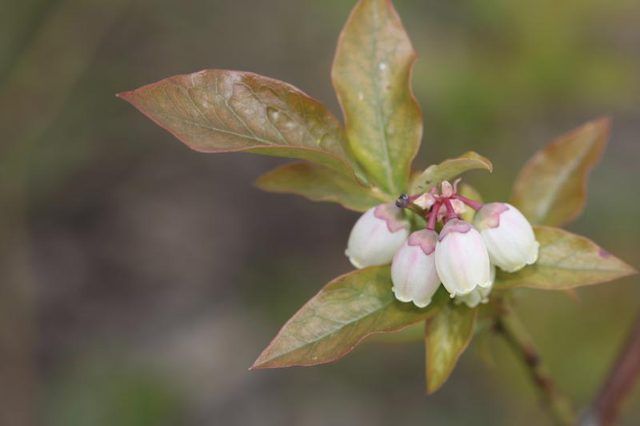Bulbs
Flower Basics
Flower Beds & Specialty Gardens
Flower Garden
Garden Furniture
Garden Gnomes
Garden Seeds
Garden Sheds
Garden Statues
Garden Tools & Supplies
Gardening Basics
Green & Organic
Groundcovers & Vines
Growing Annuals
Growing Basil
Growing Beans
Growing Berries
Growing Blueberries
Growing Cactus
Growing Corn
Growing Cotton
Growing Edibles
Growing Flowers
Growing Garlic
Growing Grapes
Growing Grass
Growing Herbs
Growing Jasmine
Growing Mint
Growing Mushrooms
Orchids
Growing Peanuts
Growing Perennials
Growing Plants
Growing Rosemary
Growing Roses
Growing Strawberries
Growing Sunflowers
Growing Thyme
Growing Tomatoes
Growing Tulips
Growing Vegetables
Herb Basics
Herb Garden
Indoor Growing
Landscaping Basics
Landscaping Patios
Landscaping Plants
Landscaping Shrubs
Landscaping Trees
Landscaping Walks & Pathways
Lawn Basics
Lawn Maintenance
Lawn Mowers
Lawn Ornaments
Lawn Planting
Lawn Tools
Outdoor Growing
Overall Landscape Planning
Pests, Weeds & Problems
Plant Basics
Rock Garden
Rose Garden
Shrubs
Soil
Specialty Gardens
Trees
Vegetable Garden
Yard Maintenance
How to Grow Blueberries in a Container
How to Grow Blueberries in a Container. Before the early 1900s, if you wanted blueberries (Vaccinium spp.) you had to go into the wild to pick them. Thanks to plant breeders, now you can grow them in your garden -- or if you have limited space or want convenient access, even in containers. You can grow standard-sized blueberries if you use large...

Before the early 1900s, if you wanted blueberries (Vaccinium spp.) you had to go into the wild to pick them. Thanks to plant breeders, now you can grow them in your garden -- or if you have limited space or want convenient access, even in containers. You can grow standard-sized blueberries if you use large containers, but shorter varieties can use smaller containers. Plant two or more varieties so you'll get cross-pollination and better yield.
Tall Blueberry Cultivars
Taller-growing blueberries need room. The most widely grown blueberry, northern highbush blueberry (Vaccinium corymbosum) and its many cultivars, grows in U.S. Department of Agriculture plant hardiness zones 3 through 8 and usually reaches 6 feet high and wide. Southern highbush blueberries (Vaccinium x corymbosum) are hybrids of northern highbush with other blueberry species. Ordinarily 6 feet high, southern highbush blueberry is hardy in USDA zones 7 through 10. Even taller, rabbiteye (Vaccinium ashei, zones 7 through 10) can reach 15 feet tall.
Smaller-Growing Blueberries
About half the size of northern highbush, half-high blueberries are hybrids between northern highbush and lowbush blueberry (Vaccinium angustifolium, zones 3 through 6). An example is "Northblue" (Vaccinium x "Northblue"), which grows 24 to 36 inches tall in USDA zones 3 through 7, suitable for areas with cold winters. For mild winter climates, a good choice for containers is "Sunshine Blue" (Vaccinium x "Sunshine Blue"), a southern highbush semi-dwarf variety 3 to 4 feet tall and hardy in USDA zones 5 through 10.
Container Choices
For all blueberries, begin with a 5-gallon or 12-inch pot size. Containers should have multiple drainage holes. Once the young blueberry is established, transplant it into a larger pot size once roots become crowded. For larger blueberry cultivars, they'll finally need a 16- to 20-inch pot or a half-barrel container. For shorter varieties, try for an eventual 7- to 10-gallon pot size.
Sun and Soil
Blueberries do best in a sunny location, although they'll grow in partial shade. More shaded situations result in lower fruit yield and less fall color in the foliage. Blueberries require an acidic soil, so growing in containers gives the opportunity to supply the exact soil mixture they need. This can be an advantage if you garden in an area with alkaline soil, which is difficult to amend to proper blueberry growing ranges. Use a soil-less mix such as equal parts of peat moss and pine bark. Another option is 2 parts peat moss, 2 parts coconut coir and 1 part perlite.
Watering Considerations
As in all container gardening, the growing medium within a container dries out more quickly than it does when a plant is in the ground. You'll need to pay careful, year-round attention to moisture levels for container blueberries. Aim to keep blueberry potting mixes moist but not soggy. The University of Wisconsin Extension suggests more frequent, light waterings interspersed with heavy soakings. Consider watering with collected rain water, since local water may be alkaline and affect the soil's acidity.
Fertilizer Needs
Fertilizers for acid-loving plants such as camellias and azaleas are suitable for blueberries. Use a slow-release product such as 4-3-4 in spring and fall. Add 1 cup of fertilizer per foot of branch spread in spring and 1/2 cup in fall. Dig it in to the top layer of soil. During spring and early summer when blueberries are actively growing and forming fruit, also fertilize every two weeks with a water-soluble acidic fertilizer such as 30-10-10. Mix 1/2 teaspoon with every gallon of water used. Soak the root zone until water comes through the drainage holes.
Special Considerations
Container blueberries don't have much insulation against extremes of heat and cold. In hot summer areas, avoid black pots, which accumulate heat and dry the roots and soil. Shield pots from direct afternoon summer sun. In cold winters, bury containers in the ground in an area sheltered from wind and extreme cold so cold doesn't kill the roots. Add 4 to 8 inches of mulch such as straw. In spring when hard freezes are passed, dig up the containers. Blueberry bushes can live for decades, so for long-term maintenance, every three to four years unpot the plant, prune the roots and add some new potting mix before repotting it.